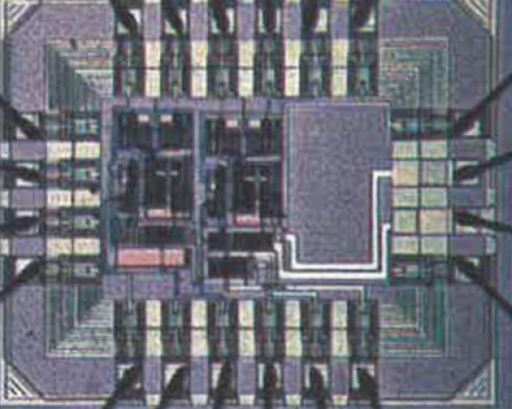The IIS Chip Gallery
Xray (1995)

by

| Application | Biomedical |
| Technology | 1200 |
| Manufacturer | VLSI Tech |
| Type | Research Project |
| Package | DIP24 |
| Dimensions | 1260μm x 1100μm |
| Voltage | 5 V |
X-ray based computer tomography (CT) jas many different applications, one of which is as a minimally invasice diagnostic technique for measuring the density of bone and other material. Many different diseases such as osteoporosis can be effectively monitored using x-ray tomography. Photons from the X-ray source that are not absorbed by the object under test are measured by a detector array, which are semiconductor diodes (CdTe) that generate weak charge pulses when hit by photons. Low-noise, high-speed amplifier and pulse shaping front-end circuitry is required for each detector. The speed, size and power consumption of the front-end will determine the temproal and spatial resolutions of the X-ray image. Fully integrated solutions are therefore being developed to miniaturize the front-end circuitry as well as reduce power consumption.
A front-end architecture specially developed to suit the characteristics of the CdTe detector has been designed and simulated. One of its critical vbuilding blovks, a low-noise, wide band amplifier together with its feedback capacitors and reset switches, has been implemented and measured. Key characteristics of the amplifier are 20dB closed loop gain, 10 MHz signal bandwidth and 9nV/sqrt(Hz) noise spectral density at 1Mhz.
The following publication is more closely related to a later version of this chip, but until we dig more information about the other chip, it will remain here.